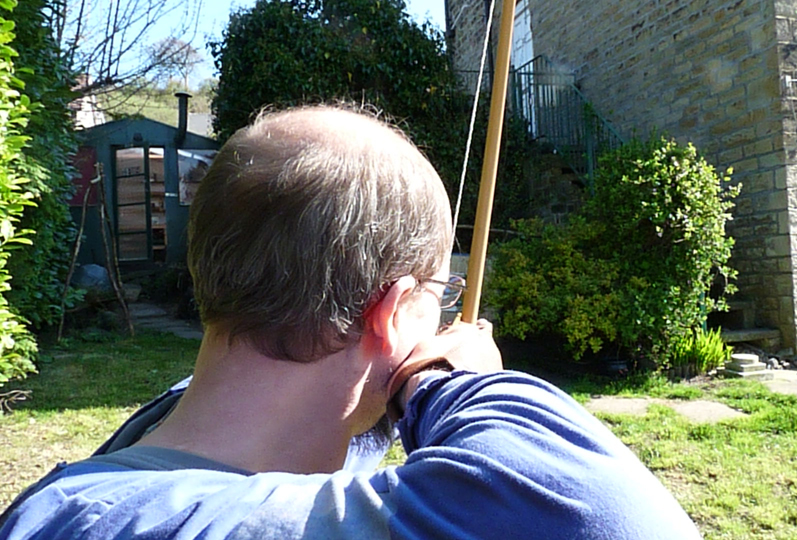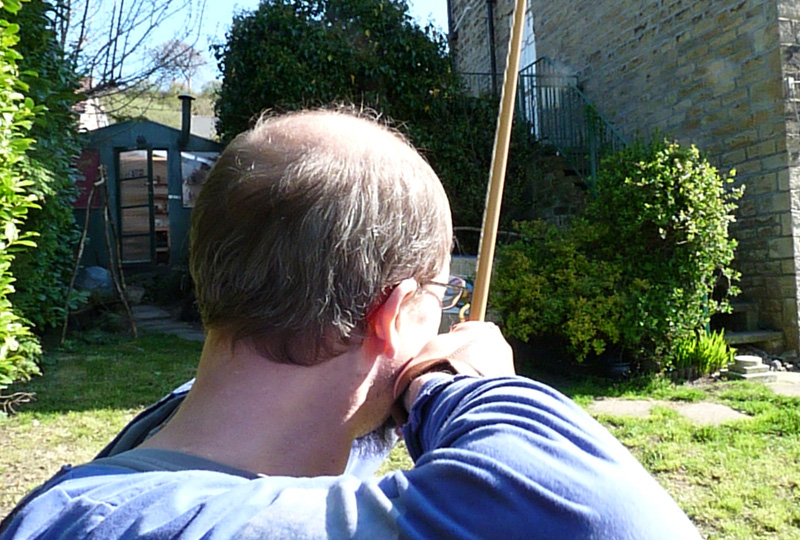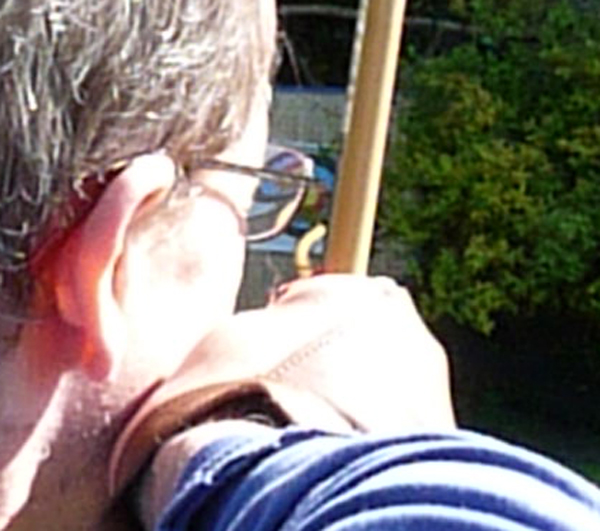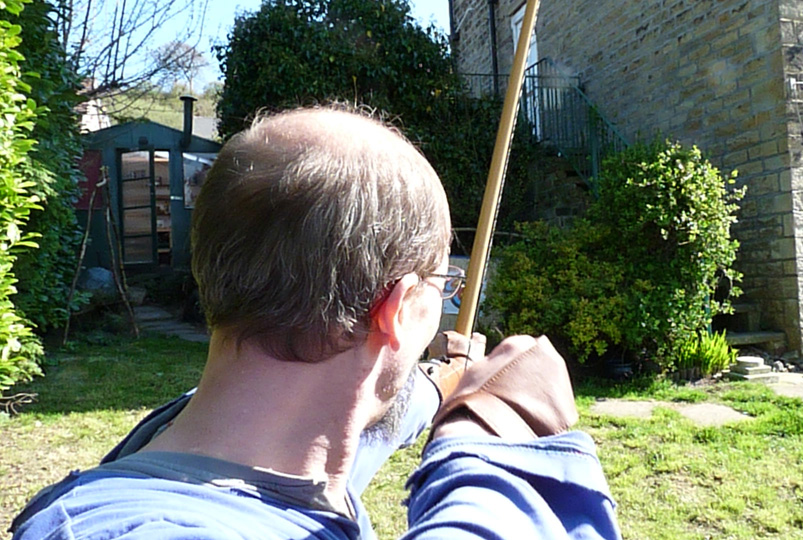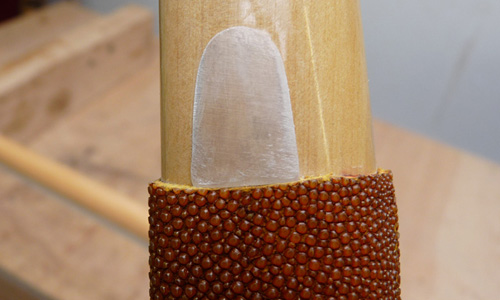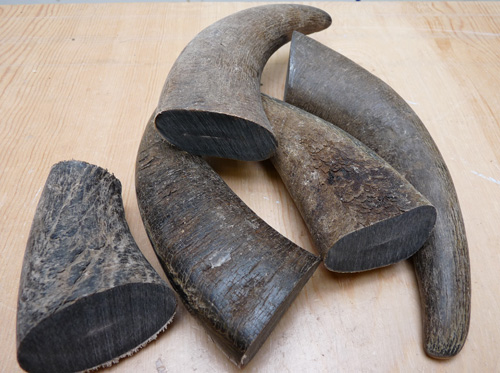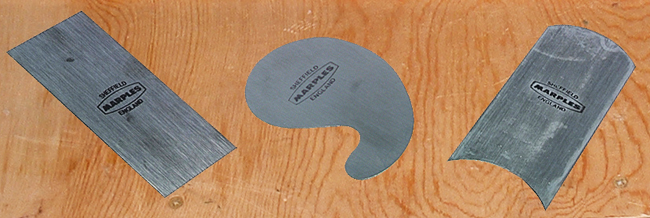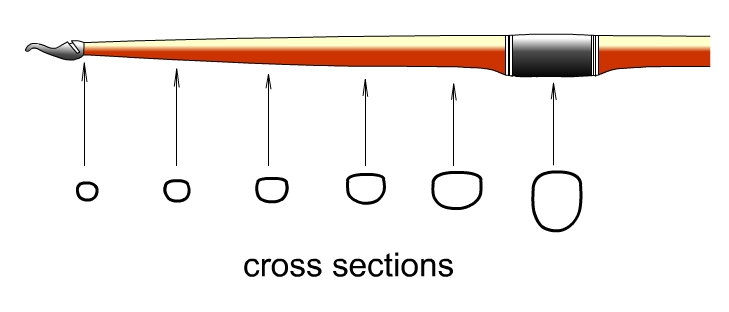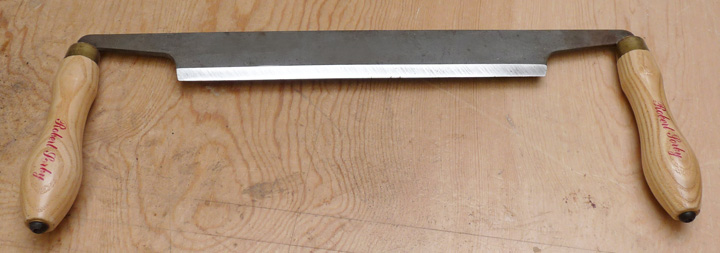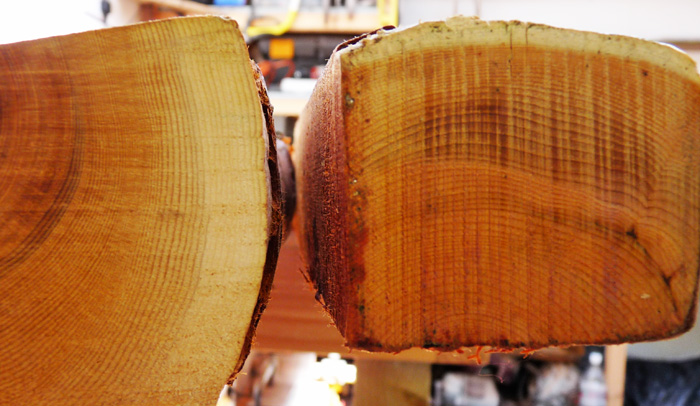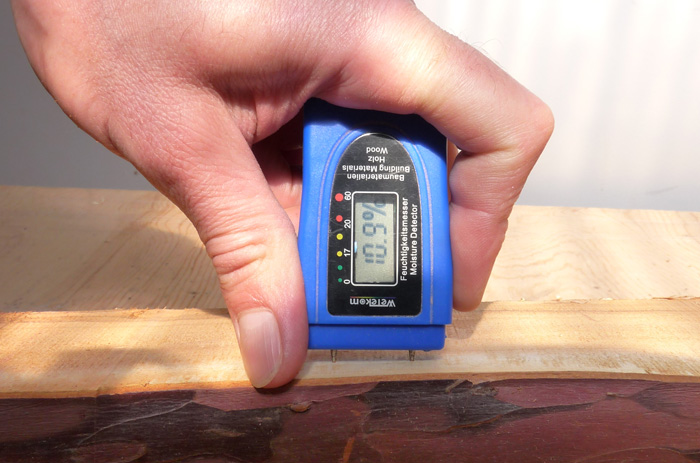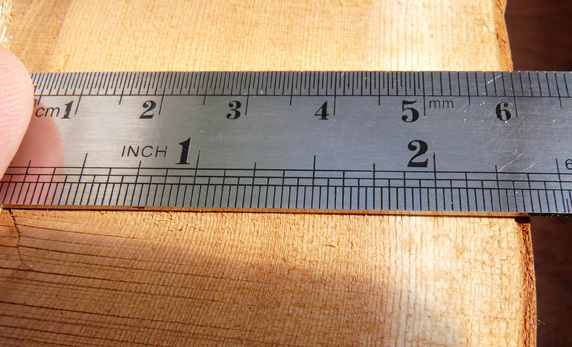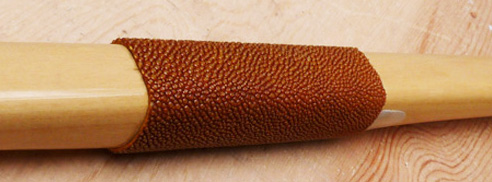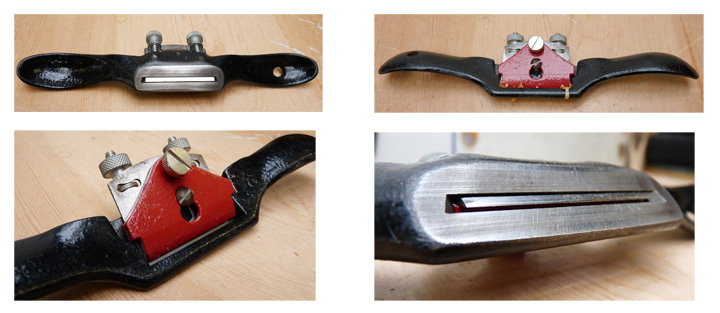|
|
A Glossary of Terms for Archers and Bowyers
A B C D E F G H I J K L M N O P Q R S T U V W X Y Z
|
|
anchor point
|
|
archers paradox
1. At full draw
2. Releasing the arrow, showing the archers paradox.
3. A close up of the previous photo.
4. Arrow in flight.
|
|
arrow plate
|
|
back
|
|
backing
|
|
belly
|
|
bending in the handle
|
|
billets
|
|
bowyers knot
|
|
bow stringer
|
|
bow woods
|
|
bracing a bow
|
|
bracer
|
|
brace height
|
|
buffalo horn
|
|
butt
|
|
cascamite
|
|
cast
|
|
cabinet scraper
|
|
carriage bow
|
|
clout
|
|
composite bow
|
|
compression
|
|
dacron
|
|
Danish oil
|
|
D shaped cross section
|
|
drawing
|
|
draw knife
|
|
draw length
|
|
draw weight
|
|
end
|
|
English longbow
|
|
equilibrium moisture content
|
|
flat bow
|
|
field archery
|
|
finish
|
|
finger tab
|
|
fistmele
|
|
Flemish string
|
|
fletching
|
|
flight arrow
|
|
footed arrow
|
|
g.n.a.s.
|
|
grain
|
|
growth rings
|
|
handle
|
|
hand shock
|
|
hardwood
|
|
heartwood
|
|
Holmegaard bow
|
|
instinctive shooting
|
|
Knot
|
|
laminated longbow
|
|
limbs
|
|
loose
|
|
Meare Heath Bow
|
|
moisture meter
|
|
nocks
|
|
nocking point
|
|
Pacific yew
|
|
pearl glue
|
|
pile
|
|
pin knot
|
|
Plug
|
|
Quiver
|
|
recurve
|
|
reflex
|
|
release
|
|
rings per inch
|
|
riser
|
|
roving mark
|
|
sapwood
|
|
self bow
|
|
serving
|
|
set
|
|
shagreen
|
|
sinew
|
|
smooth draw
|
|
softwood
|
|
spine
|
|
spliced
|
|
spoke shave
|
|
stacking
|
|
stave
|
|
steam bending
|
|
string follow
|
|
tillering
|
|
tension
|
|
war bow
|
A B C D E F G H I J K L M N O P Q R S T U V W X Y Z

